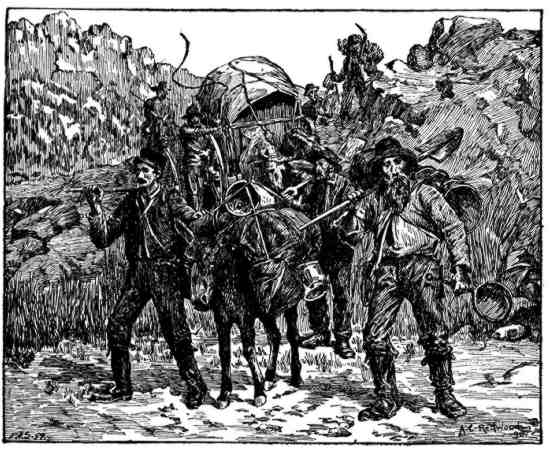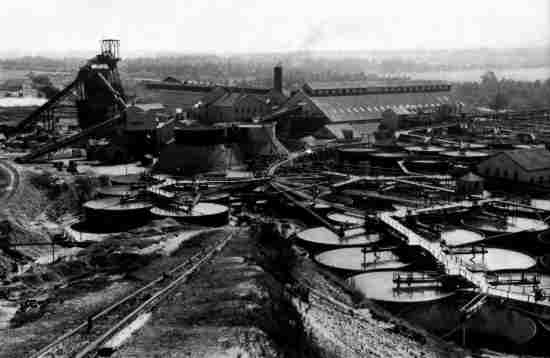Gold Inflation this time
If for centuries gold had got scarcer and scarcer than silver, the world gold stock of gold doubled during the last half of the 19th century. This change is explained by the two waves of
Gold Rushes that happened in the world during this period.
The first Gold Rush wave took place in the 1850's with California (1848)
and Australia (1850), and led to an increase in annual gold production from 77 tons in
1847 to 280 tons in 1852.
But for our purpose the second gold rush is more significant. By the end
of the century most rich ore mines had already been dug, and a lot of low ore mines were
left, too expensive to dig. But in 1887 three Scottish chemists
invented a process based on potassium cyanide for extracting gold from low-grade ore. By
simply soaking the crushed ore in a bath of potassium cyanide the silver and gold
contained in it was dissolved. Then miners had just to drain and precipitate the liquid
with some other salt. Many mines deemed so far too poor to be dug profitably gave birth to
huge amounts of gold almost overnight. This process was applied most successfully in South
Africa (1890) and Klondike (1896). South African gold production goes from zero in
1886 to 23 % of total world output in 1896.
Check the  |


![]() Return to Monetary
History
Return to Monetary
History![]() Return to François Micheloud's Homepage
Return to François Micheloud's Homepage